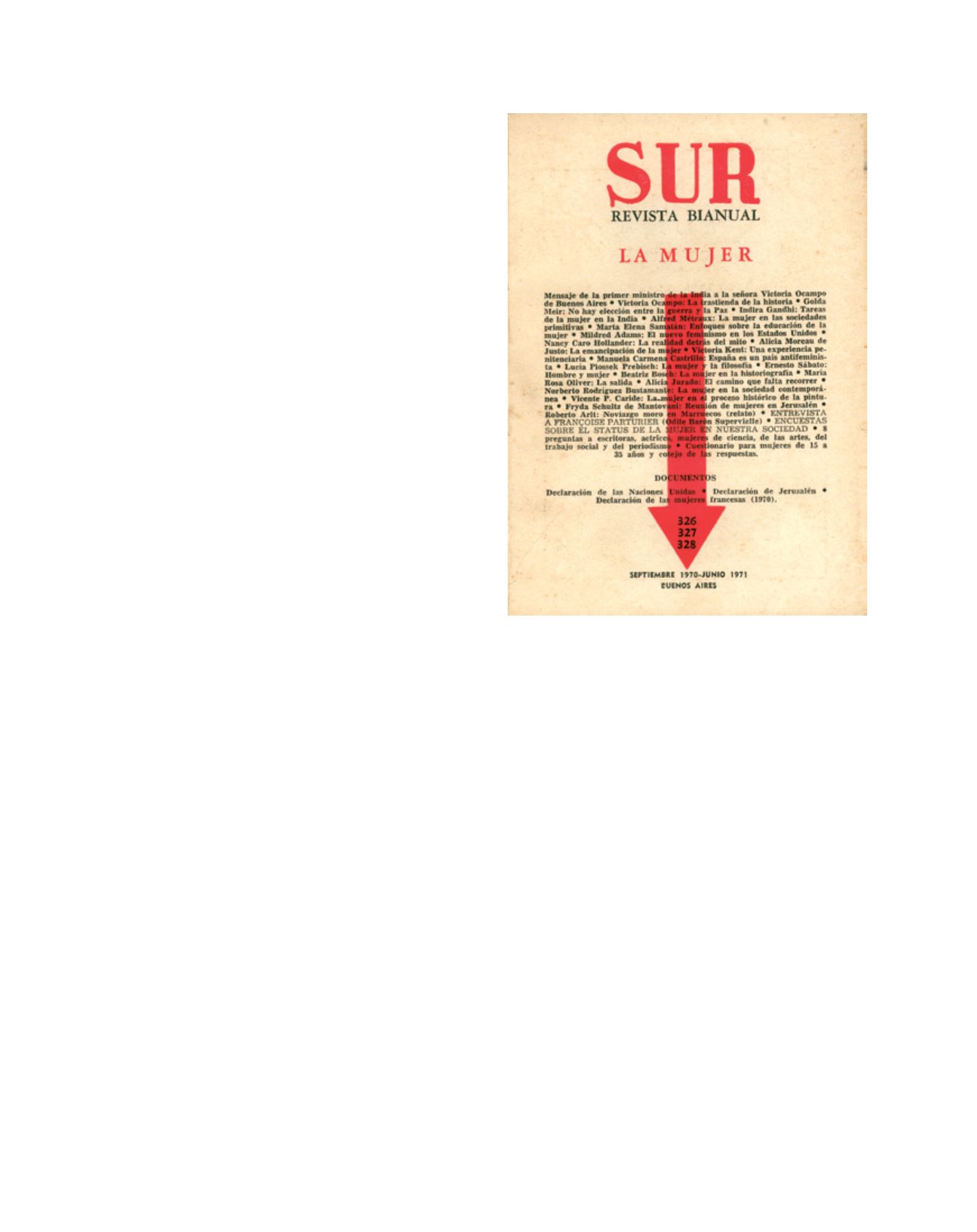

[
] 116
The communion of interests between Victoria Ocampo and
UNESCO on the importance of intercultural dialogue and the
culture of peace was long and productive. It started with her
attending the Nuremberg Trials as an audience member and with
a shared position regarding Nazi crimes and the need for the
international community’s intervention to avoid their repetition.
“For me, what took place at Belsen, at Mathausen, at Auschwitz,
at any concentration camp, is as if it had taken place here. I am
Argentine, but my homeland is the world.” The struggle for
gender equality – she was a founding member of the Unión
Argentina de Mujeres (Women’s Union of Argentina) during the
1930s and the first woman to join the Argentine Academy of
Arts in 1977 – was another of the principles they shared. But
the most important ideal upheld by Victoria Ocampo throughout
her life was the need to promote a dialogue between cultures as a
key factor for the development of societies. “Interaction between
cultures is fruitful provided the characteristics of each cultural
group are respected,” she wrote in 1976, “and I believe this is one
of UNESCO’s creeds, as it is mine.”
The first activity organized by UNESCO at Villa Ocampo in
1977 had enormous significance: it was the Colloquium on
the Dialogue among Cultures, an intercultural meeting lasting
five days, attended by eminent representatives from the intel-
lectual communities of several Latin American, European,
Middle Eastern, Asian and African countries. The colloquium
report was published in a special issue of
Sur
magazine in
1978. The ‘dialogue among cultures’ was – in the words of
Victoria Ocampo, “the dream of my life”.
The fortieth anniversary of the donation of Villa Ocampo
to UNESCO was commemorated on 10 December 2013. This
donation arose from the many coincidences between Victoria
Ocampo’s values and those of the organization: the role of
culture as a determinant for development and inclusion;
promotion of cultural diversity and women’s rights; tolerance
and openness to others’ ideas. In fact, it was a donation with
responsibilities: for promoting these shared values, for contin-
uing the active cultural life that the property had enjoyed for
over half a century, and for the property “to serve, in a living
and creative spirit, for the promotion, study, experimentation
and development of activities spanning culture, literature, the
arts, social communication and peace among peoples.”
Under its management, UNESCO carried out innumerable
activities at Villa Ocampo, such as the Regional Seminar on
Cultural Management Policies in the MERCOSUR; the work-
shop on Places of Memory on the Slave Route in Argentina,
Paraguay and Uruguay; the meeting of 42Ministers of Education
from the countries of Latin America and the Caribbean; and the
workshop on the declaration of Outstanding Universal Value of
Latin American and Caribbean sites on the World Heritage List.
During the first stage of the 2003-2013 project, UNESCO
concentrated on the renovation and conservation of Victoria
Ocampo’s house, garden, library, archives, furniture and works
of art with highly satisfactory results. Restoration works were
possible thanks to the contribution of the Argentine state.
In addition to the state, the Municipality of San Isidro, a wide
range of national and municipal museums, the Friends of Villa
Ocampo Association, the Fundación Sur, which holds Victoria
Ocampo’s copyright, the private sector and various embassies
have generously collaborated with us over the years.
Following this stage of the restoration and apprecia-
tion through a wide-ranging artistic programme involving
concerts, theatre, conferences, literary presentations, chil-
dren’s programmes, art shows, contemporary dance, movie
screenings and filming in the house, Villa Ocampo’s manage-
ment now needs to adjust itself to meet the organization’s
programmatic priorities. As Victoria Ocampo wrote in her
donation: the property must be used in order to contribute
to “UNESCO’s aims, in accordance with its constitution and
to programme activities adopted by the General Conference.”
Villa Ocampo, faithful to its owner’s intellectual and ethical
legacy, must fulfil the role of cultural rapprochement and
contribute to forging “a new humanism,” understood as a
new way of being together in the mutual respect of cultural
diversity and universal ethics. This was the essential principle
that guided Victoria Ocampo’s role as editor of
Sur
magazine:
to build bridges across different cultures and languages and to
give space to the most diverse cultural expressions. The only
criterion was literary quality and humanistic values.
On 20-21 November 2014, UNESCO and Villa Ocampo organ-
ized a series of important activities in Buenos Aires to launch a
new phase of the Villa Ocampo Programme. These activities all
had a common theme: that of Victoria Ocampo’s legacy and her
close connection with UNESCO’s mandate within the interna-
tional system. The activities were supported by the Ministry of
Culture of the Argentine Nation, organized civil society institu-
tions, the United Nations and the academic community.
The last issue of
Sur
magazine, entirely dedicated to women
Image: © UNESCO Villa Ocampo
A
gree
to
D
iffer

















